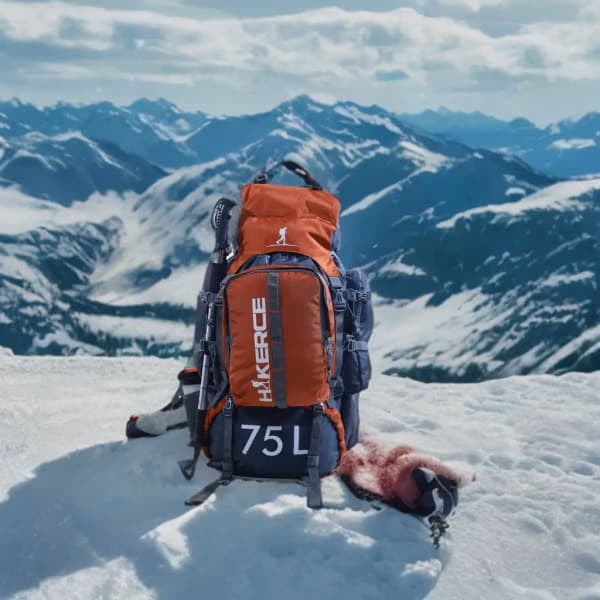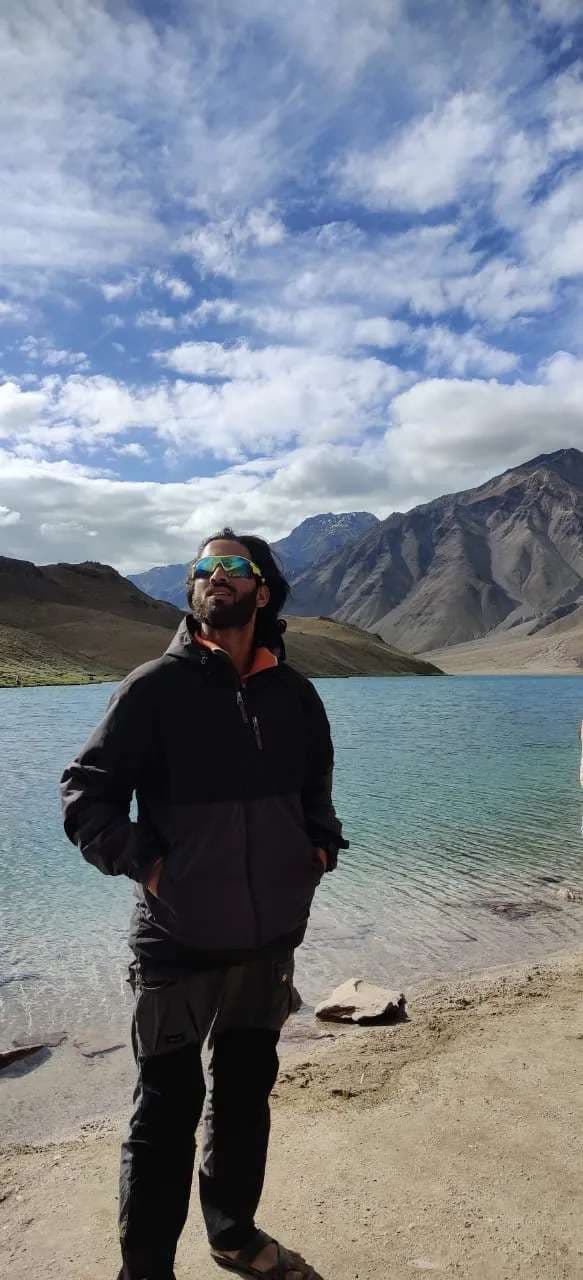The Nag Tibba Trek is a captivating adventure in the Garhwal Himalayas of Uttarakhand, India. It offers an exhilarating experience for both novice and seasoned trekkers. Known as the 'Serpent's Peak,' Nag Tibba stands at an impressive altitude of 3,022 meters (9,914 feet), making it the highest peak in the lower Himalayan range. This two-day trek presents a moderate difficulty level, making it accessible and enjoyable for all.
Located just a few hours from Dehradun and Mussoorie, the trek takes you through dense forests, scenic meadows, and quaint villages, culminating at the Nag Tibba summit. Trekkers are rewarded with panoramic views of the snow-clad Himalayan ranges, including Swargarohini, Bandarpoonch, Kala Nag, and Gangotri. The total Nag Tibba Trek distance is approximately 16 km, covered over the two days, providing a perfect blend of challenge and natural beauty.
The best time for the Nag Tibba Trek is from April to June and October to December when pleasant weather and clear skies are available. The temperature varies with the seasons, ranging from 10°C to 25°C in summer and -2°C to 15°C in winter. The trek's weather conditions are generally clear, though trekkers should always be prepared for sudden changes.
At an altitude of 3,022 meters, the Nag Tibba Trek height provides stunning vistas and a sense of accomplishment. The trek begins from Pantwari village at around 1,350 meters, gradually ascending to the summit. Despite its moderate difficulty level, proper preparation is essential, including maintaining basic physical fitness and carrying essential trekking gear.
The Nag Tibba Trek itinerary typically includes a day-wise breakdown of the trek, starting from Pantwari village to the base camp and finally to the summit and back. Detailed route maps and visual representations help trekkers plan their journey effectively. Various Nag Tibba Trek packages, including guide services, camping equipment, and meals, are available, making the booking process straightforward.
Overall, the Nag Tibba Trek is a perfect choice for those seeking a refreshing Himalayan adventure, with its accessibility, natural beauty, and stunning vistas creating unforgettable memories. Whether camping under star-studded skies near the summit or connecting with the local Garhwali culture, the Nag Tibba Trek promises an enriching and exhilarating experience.
Why Choose Nag Tibba Trek
Here are some key reasons to choose the Nag Tibba Trek:
Beginner-Friendly: It's a relatively easy trek, making it ideal for beginners and families.
Year-Round Destination: Unlike many treks, Nag Tibba is accessible throughout the year, including winter when it offers snow-covered landscapes.
Stunning Views: The summit offers panoramic views of the Himalayas, including peaks like Bandarpoonch, Kedarnath, and Gangotri.
Short and Sweet: The trek can be completed in just two days, perfect for a quick weekend getaway.
Scenic Campsites: You'll camp in beautiful meadows surrounded by dense forests and mountain views.
Rich Flora and Fauna: The route takes you through oak, and rhododendron forests, and you might spot a variety of birds and wildlife.
It's an ideal trek for those seeking a quick, peaceful escape into nature.
Best Time for Nag Tibba Trek
The Nag Tibba Trek offers an enchanting adventure throughout the year, but the ideal times to embark on this journey are from March to April and September to November. During the spring months of March and April, the weather is generally pleasant, with daytime Nag Tibba temperatures ranging from 10°C to 20°C (50°F to 68°F). The trekking trails are relatively dry, and the surrounding forests come alive with blooming rhododendrons and other wildflowers, creating a picturesque backdrop for trekkers.
The autumn months from September to November provide another excellent window for the Nag Tibba Trek. The weather is cool and crisp, with daytime temperatures ranging from 10°C to 15°C (50°F to 59°F). The post-monsoon period ensures clear skies, offering stunning views of the Himalayan peaks. The trails are in good condition, making for a delightful trekking experience. These seasons provide the best trekking conditions for weather, trail accessibility, and scenic beauty. The moderate temperatures and clear skies enhance the overall trekking experience. However, it's important to note that weather conditions in the mountains can change rapidly, so it's advisable to check the Nag Tibba local weather forecast before starting your trek and to be prepared for temperature drops, especially at higher altitudes.
How to Reach Dehradun
Dehradun, a famous city in Uttarakhand, is known for its pleasant scenic surroundings. Here's how you can reach this gateway to the Nag Tibba Trek:
By Air: Dehradun's Jolly Grant Airport is the nearest domestic airport. Connected flights from Delhi International Airport can bring you here. The airport is 20 km from the central city, and you can hire a cab/taxi to reach the city. From Dehradun, shared Bolero services or separate cabs/taxis can take you to Pantwari, the starting point of the trek.
By Road: Dehradun is well-connected with major cities via NH 72. From Delhi, you can take Volvo buses from Majnu ka Tila and RK Ashram or government buses from Kashmiri Gate. Frequent bus services are available. Upon reaching Dehradun, you can hire a cab/taxi to go to the central city and proceed to Pantwari.
By Train: Dehradun Railway Station is well-connected to cities like Delhi, Mumbai, Lucknow, Kolkata, Varanasi, and Vadodara. Upon arrival, hire a cab/taxi to reach the city centre, from where you can get Bolero services or hire a separate cab/taxi to Pantwari.
Embark on the Nag Tibba Trek to experience the majestic beauty of the Himalayas. Whether camping under star-studded skies near the summit or connecting with the local Garhwali culture, this trek promises an enriching and exhilarating adventure.
Difficulty Level of Nag Tibba Trek
The Nag Tibba Trek, located in Uttarakhand, offers moderate difficulty, making it suitable for both novice and experienced trekkers. While not as strenuous as higher Himalayan treks, it presents its challenges. The trail meanders through dense forests, steep ascents, and rocky terrain, requiring a reasonable fitness level. Altitude gains are gradual, allowing for better acclimatisation. However, trekking at heights up to 9,915 feet (3,022 meters) can pose a mild risk of altitude sickness. Overall, the Nag Tibba Trek is an excellent choice for those looking for a rewarding trek with manageable difficulty and stunning views.
How to Prepare for Nag Tibba Trek
Preparing for the Nag Tibba Trek involves several vital steps to ensure a safe and enjoyable experience. Focus on physical fitness through regular cardio workouts and hiking practice to strengthen your legs and core muscles, as the trek involves steep climbs. Packing is crucial; carry essential gear like comfortable trekking shoes, layered clothing for varying Nag Tibba temperatures, and a good-quality backpack. Ensure you have a well-stocked first-aid kit and any necessary medications. Stay hydrated during the trek with a reusable water bottle and water purification tablets. Acclimatisation is vital; spend a day in Dehradun or Mussoorie before starting the trek to adapt to the higher altitudes. Finally, consider hiring a local guide for navigation and safety during the Nag Tibba Trek.
Which Safety Factors Are Considered During Nag Tibba Trek
Safety is paramount during the Nag Tibba Trek to ensure a memorable and secure experience in the Himalayas. Several key safety factors are considered:
Acclimatisation: Adequate acclimatisation is crucial when ascending to higher altitudes. Trekkers often spend a day in Dehradun or Mussoorie before starting the trek to gradually adjust to the elevation.
Weather Conditions: Weather in the Himalayas can be unpredictable. Checking the weather forecast and being prepared for sudden changes is vital. Carrying appropriate clothing, rain gear, and cold-weather gear is essential.
Hydration: Staying hydrated is critical, especially at higher altitudes. Trekkers are advised to carry a reusable water bottle and water purification tablets to ensure a clean water supply.
Altitude Sickness: Nag Tibba reaches altitudes of around 9,915 feet (3,022 meters), where altitude sickness can occur. Trekking at a moderate pace, staying hydrated, and recognizing symptoms like headache, nausea, or dizziness are essential. Descending if symptoms worsen is necessary.
First Aid: Carrying a well-stocked first aid kit is essential for minor injuries. Knowing basic first aid procedures can be a lifesaver.
Navigation: The trail can be confusing in some parts. Hiring a local guide ensures that trekkers stay on the right path and avoid getting lost.
Emergency Contacts: Informing someone about your trekking plans, including expected return dates and contacts, is a safety measure. Emergency contacts for local authorities or trek organisers should also be noted.
By considering these safety factors and taking necessary precautions, trekkers can enjoy the Nag Tibba Trek while minimising risks and ensuring a safe journey in the Himalayan wilderness.


















































